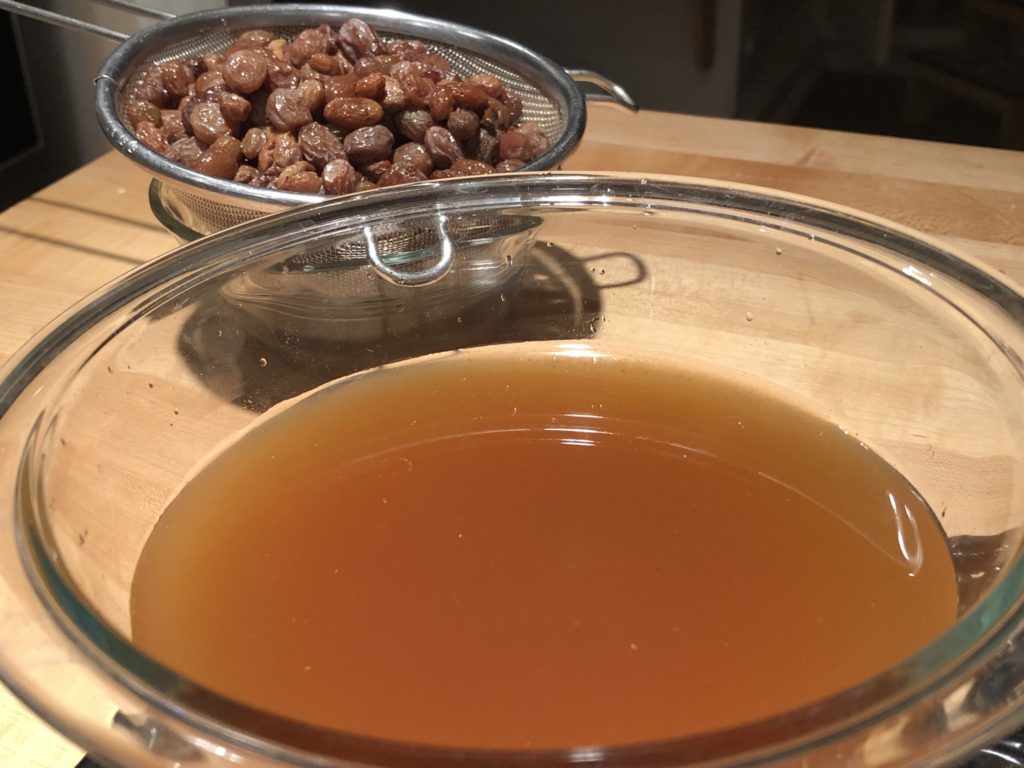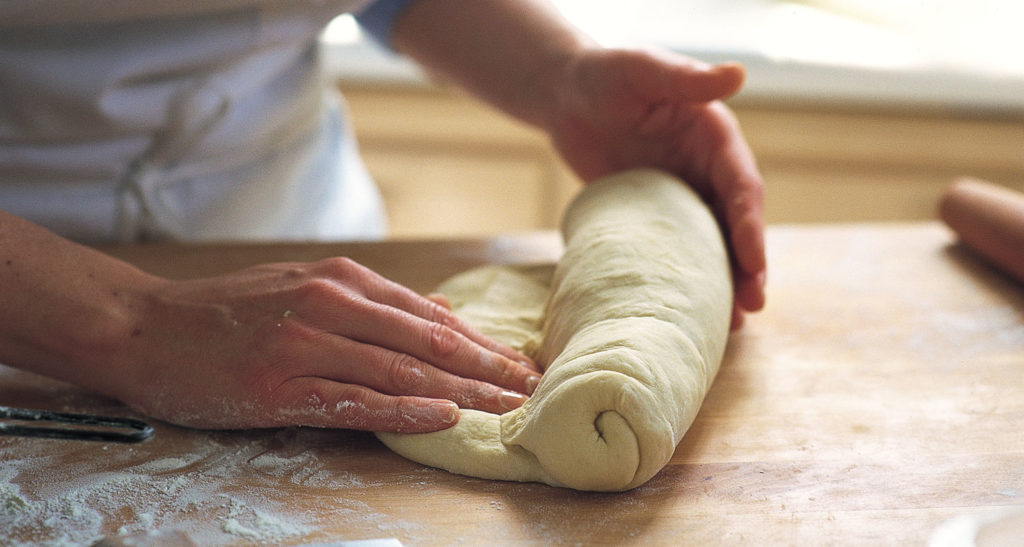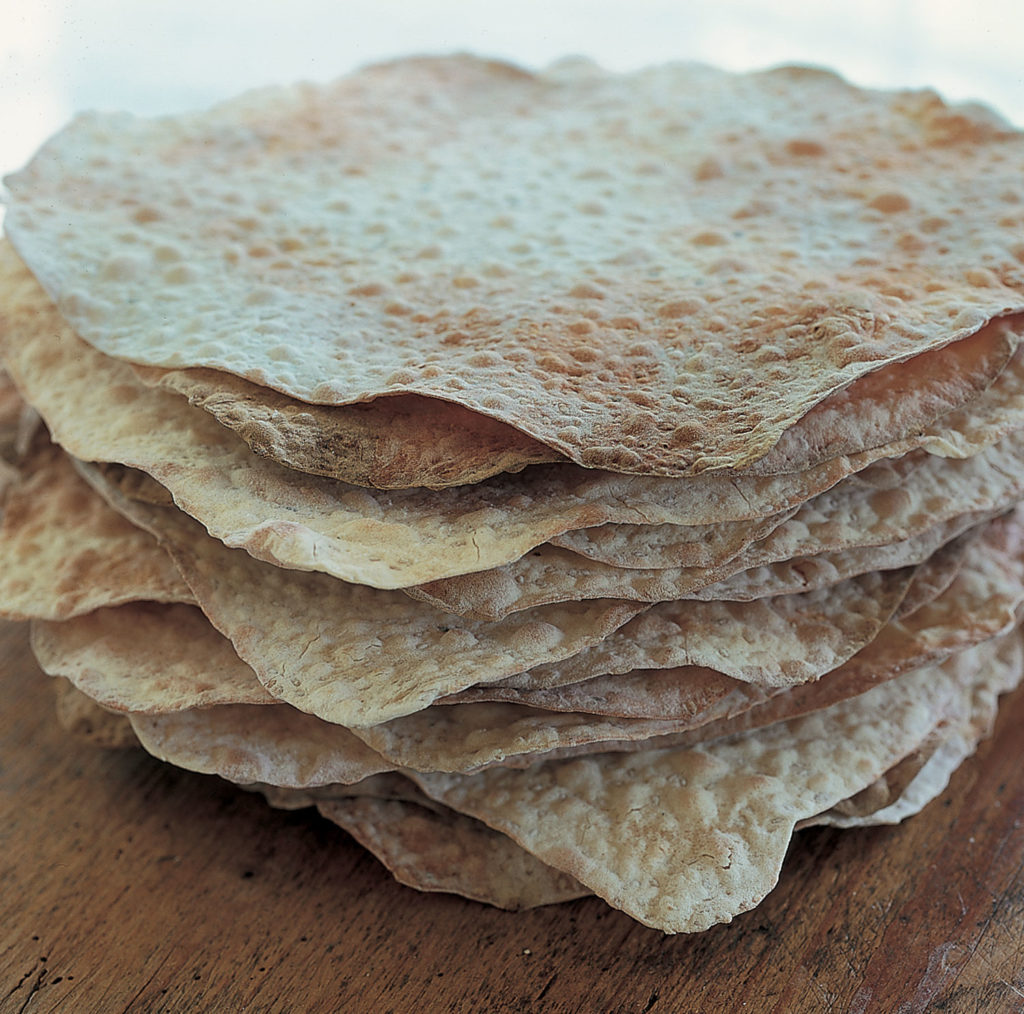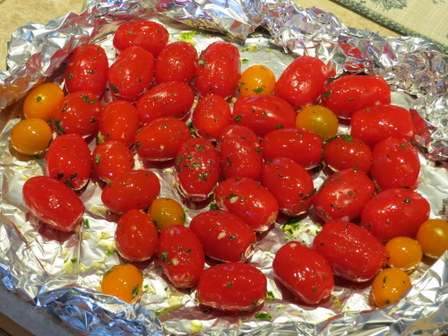Buying and storing eggs: Although it feels homey to buy eggs from a farmers market where the cartons are sitting on a warm counter next to inviting fruits and vegetables, it’s not wise to do so. Eggs kept at room temperature for one day will age as rapidly as a refrigerated egg ages in one week! Never wash or even wipe your eggs before storing since you will remove their protective waxy covering which helps to prevent strong odors of other foods from penetrating the porous egg shells.
Eggs should always be stored in the carton with the “pointed end” down. Why? First you need to understand how an egg is constructed and positioned within the shell. The shape of an egg is significant here—notice that one end of the egg is pointed and the other wider and rounder. Inside the egg, the yolk (the “fat”) is sitting at the pointed end. So the white, which makes up most of the contents of the shell, always sits near the wider end. There is a tiny pocket of air that is always present in the shell (from formation) and this air pocket becomes larger as the egg ages, because the white, which is mostly water, begins to thin and evaporate over time. So, in order to protect the yolk (which is the most perishable part of the egg) from prematurely going bad, you should keep the egg pointed, or yolk-side down in the carton. This is to keep the yolk always covered by the white, even as it begins to evaporate. To maintain a constant temperature, store eggs in their original carton in the coldest part of the refrigerator (bottom shelf) and not in the “egg tray” on the refrigerator door. For best longevity, keep eggs at 40°F.
How to tell if an egg in the shell is fresh: Don’t always go by the date on the carton. Due to poor storage during transit, your eggs might have been exposed to extreme heat or days out of refrigeration (which accelerates aging). So, to be sure, submerge the whole egg (in its shell) in some cool tap water, covering it by an inch or two. If really fresh, the egg will sink. As the egg ages, because the white starts evaporating, the amount of air inside the shell increases. So, the yolk, which is now heavier than the white will cause the pointed end (which houses the yolk) to tip down in the water and the wider (now emptier end) will begin to rise. So the egg will look more and more tilted in the water as it ages, until it eventually floats—which means the egg is bad and should not be eaten.
How to tell if a cracked egg is fresh: Once the egg is cracked and released into a bowl (or a hot pan), look at the white. The white of a really fresh egg is thick, whitish (actually cloudy) and viscous. As it ages it becomes thinner, clearer and more watery in appearance and feel. The yolk, when really fresh, is plump, bright and sits up nicely, since the thin natural membrane (which is clear) that covers the yolk is strong. As the egg ages, this membrane starts to dissipate, leaving the yolk flat-looking.
Brown eggs and white eggs—is their a difference?: There is no difference in nutrional value between brown eggs and white eggs. The color of an eggshell is determined by the “type” of hen that laid the egg. In my opinion, the most delicious and nutritious eggs are organic eggs, since I’m more assured that the hen that laid the egg ate well and lived a more healthful and humane existence. You don’t need to go to “health food” stores anymore to purchase organic eggs. They are now sold in many supermarkets across the country. If you can’t find organic eggs in your market, ask your shopkeeper, and assure him or her that you and all your friends will support this important addition to that market.
Freezing “extra” egg whites or yolks: When a recipe either yolks or whites only, the remaining parts can be frozen for future use. To freeze egg whites, pour each white into individual ice cube cups. When frozen, pop them out and store in a heavy-duty plastic bag. Egg yolks don’t freeze well by themselves and need to be mixed with a bit of salt, sugar or light corn syrup before freezing. Salt is the most versatile since it won’t affect the flavor like sugar. For every two egg yolks, mix in a pinch of salt and place in a small labeled container. Thaw either components overnight in the refrigerator and use them promptly.
Eggs and Salmonella: Salmonella is an organism that infects the ovaries of an otherwise healthy hen. The organisms infect the egg as it’s developing, before the shell ever forms. You can’t tell if an egg is infected with salmonella organisms, since this condition has no odor or taste. Many eggs might have salmonella (as well as uncooked poultry) but, when cooked properly, these organisms are killed, so there’s no need to worry. The best way to be sure and avoid salmonella poisoning is to avoid eating mixtures with raw egg (even cookie dough, sorry to say!). There are pasteurized eggs (dried) available now and, once reconstituted, they can be used in place of a raw egg. Note that pasteurized eggs should be used for baking only—dried eggs, even once reconstituted, do not taste good (when used raw) and won’t give the same emulsifying effect as a fresh egg.
The question of room temperature: Most baking recipes request that eggs be at room temperature because it’s better to whip the whites and cream the yolks when they are not chilled. (Your whipped whites will be most voluminous and your cake batters will be much lighter.) But conversely, eggs are much easier to separate when they are cold. The yolk has a protective translucent skin (which keeps it separate in the shell) and the white is heavy and very gelatinous. These qualities make it easy for the weighty egg white to fall naturally away from the yolk when you separate them. But as the egg warms to room temperature, the gelatinous quality of the white becomes watery and thin (perfect for whipping) and the protective skin around the yolk melts away, encouraging it to “bleed” into the white while separating the two. So it’s always best to separate eggs when chilled and then bring up their temperature for beating and creaming. Since eggs are highly perishable, it’s best not to leave them out at room temperature for hours to “temp up.” Instead, after separating the yolks from the whites, bring each up to tepid (warm to the touch) by placing the bowl of each (one at a time) in a skillet of hot, not simmering, water over very low heat while whisking constantly.
To separate eggs: Place three bowls on your counter (preferably one with a thin rim for cracking the eggs). Crack a chilled egg against the rim of a bowl to create one neat split. Cradle the egg in the fingers of both hands over one bowl, turn egg (cracked side up) and insert the tips of your thumb nails into the split. Carefully open the shell allowing some of the white to fall out and into the bowl. Then tilt egg to one side as you completely open the shell encouraging the yolk to sit inside one half of the shell. Dump any white from the other half into the bowl and carefully transfer the yolk back and forth from shell to shell, allowing any remaining white to fall into the bowl. (If the egg shell didn’t split evenly and one side is too small to accommodate the yolk, pour the whole egg onto the fingers of one hand and allow the white to slip through your fingers and into the bowl.)
Place the yolk into another bowl and, if the separation was successful and there are no traces of yolk in the whites, pour the pure egg white into the third (empty) bowl. If any yolk should drip into the egg white, discard that white and wipe out the bowl before trying again.
To whip egg whites: Before placing egg whites into the whipping bowl, make sure that the bowl and the beating element are both immaculate. Also, it’s best to warm the whites in a shallow hot-water bath to encourage them to lose all trace of coagulation before whipping. This way, the thin and watery whites are better able to incorporate the air necessary to form the millions of tiny bubbles that make up those white fluffy clouds when whipped. When making meringue, the sugar not only sweetens the whipped egg whites but also acts as a stabilizer, as does the cream of tartar and salt. And as for consistency, it’s always better to under whip your whites slightly than to overbite them into a dull, dry, broken mass. If by chance this should happen, add another tepid white or two, and give it another go with the mixer. Cream of tartar is helpful to stabilize and built volume in the egg whites while whipping. However, if you choose to use a copper bowl and whip your egg whites manually with a balloon whisk, omit the cream of tartar since the chemical reaction between it and the copper will cause the whites to take on a greenish tinge. (Since copper itself is a stabilizer anyway, cream of tartar is not needed.) Also, aluminum bowls turn egg whites gray. So, always use a nonmetallic or a stainless steel bowl when using cream of tartar.


 Delicious
Delicious You are enough.
You are enough. How to feed your sourdough starter right!
How to feed your sourdough starter right! Disappointment
Disappointment How Religious are You?
How Religious are You? Some foods to always have prepared and ready.
Some foods to always have prepared and ready.